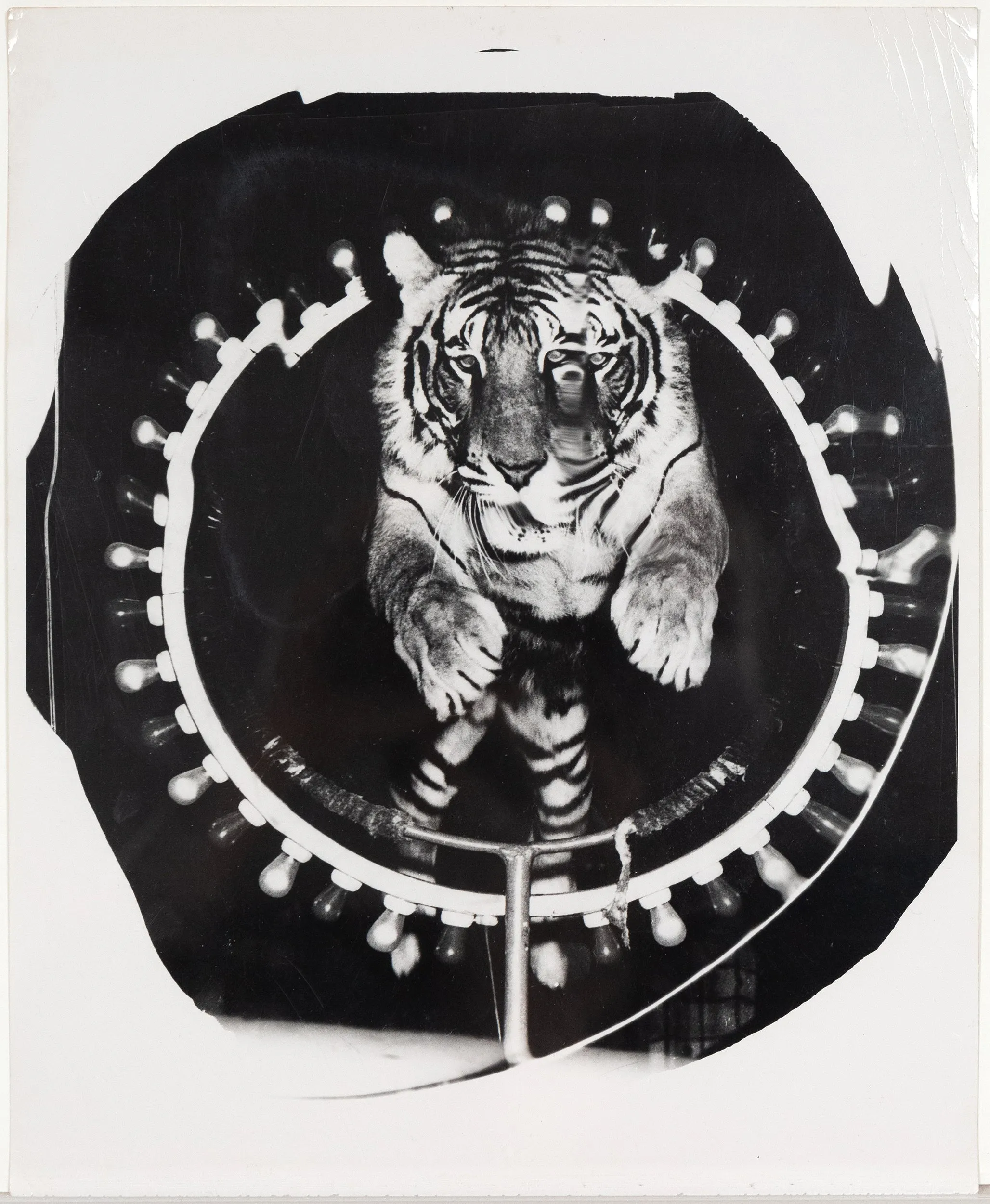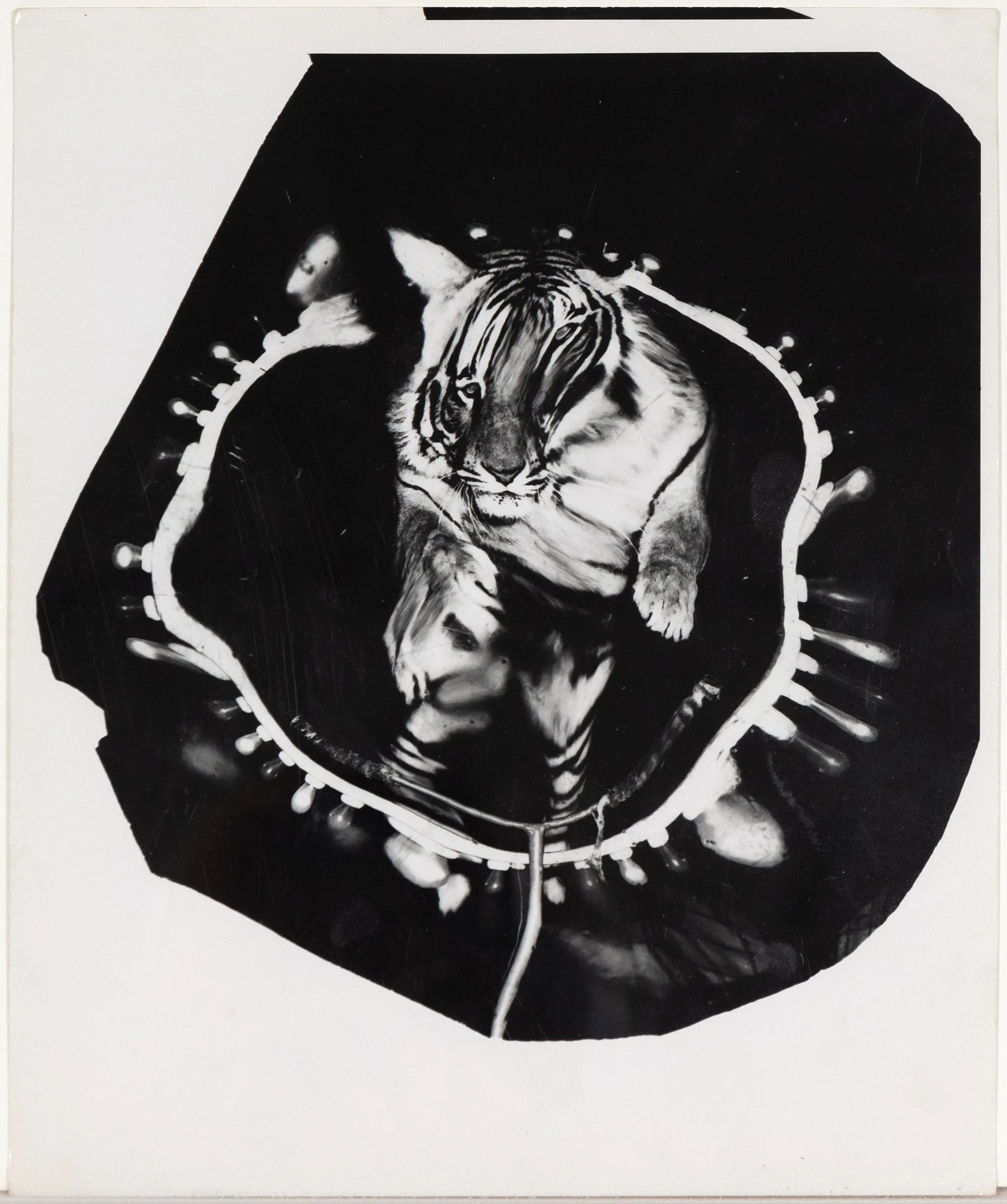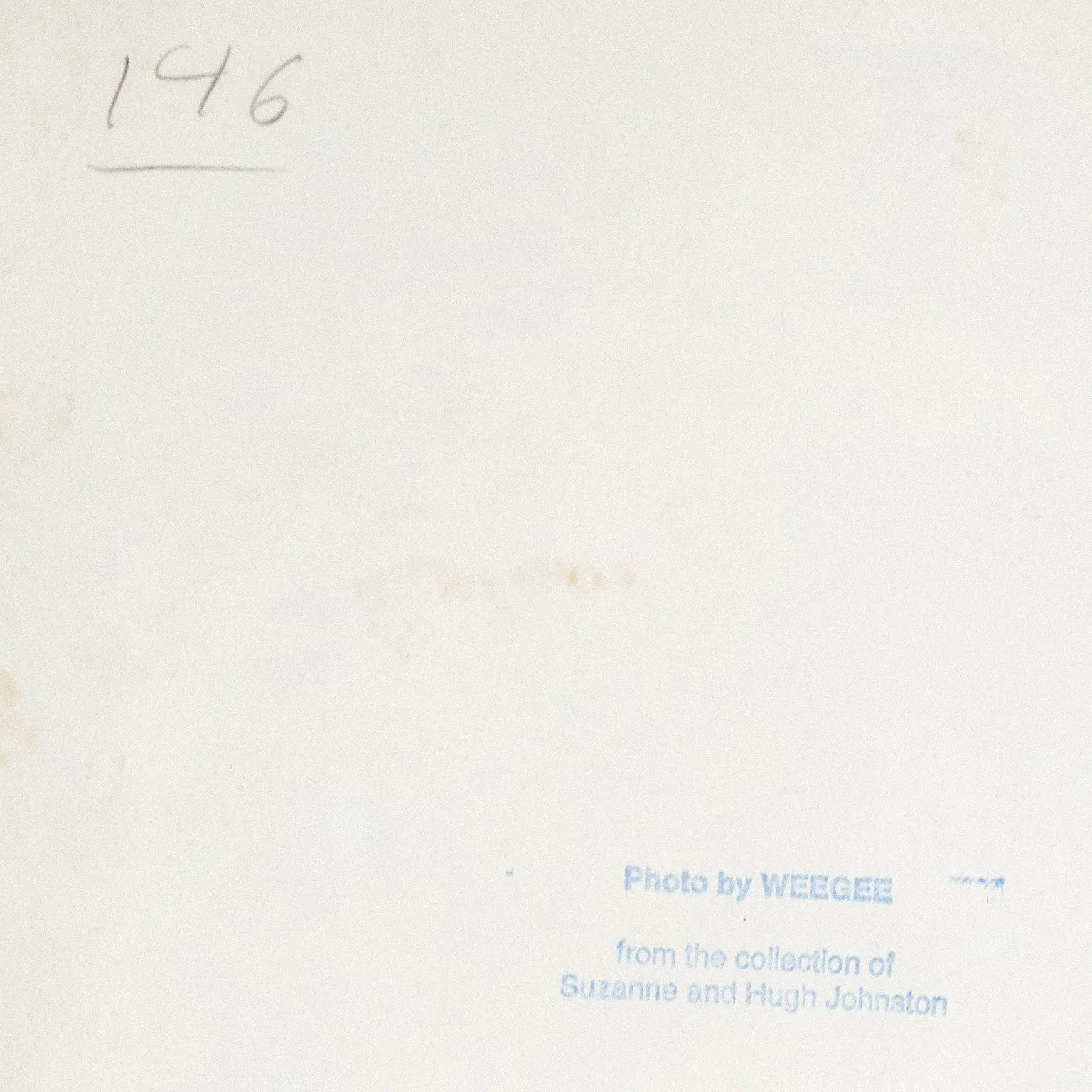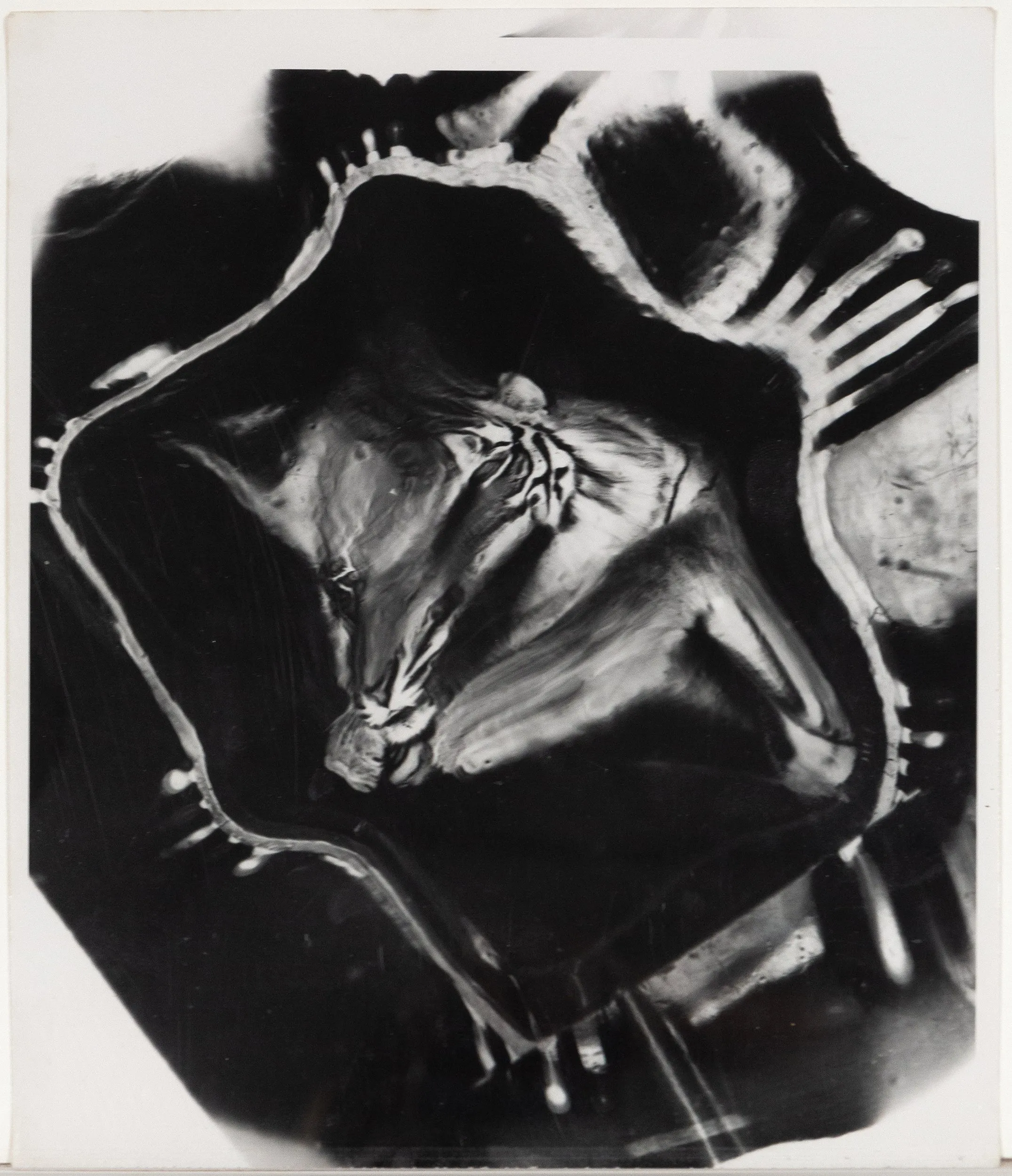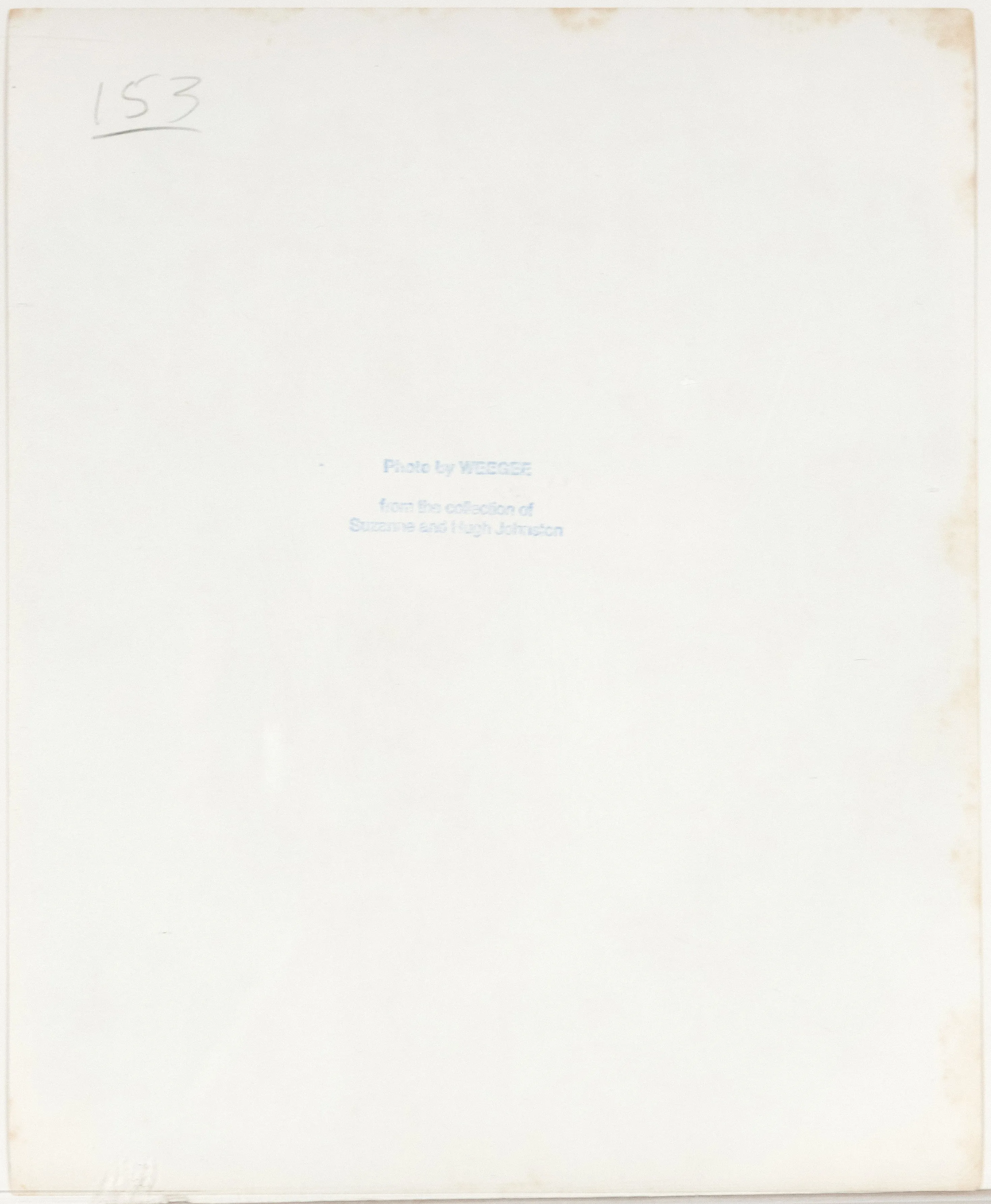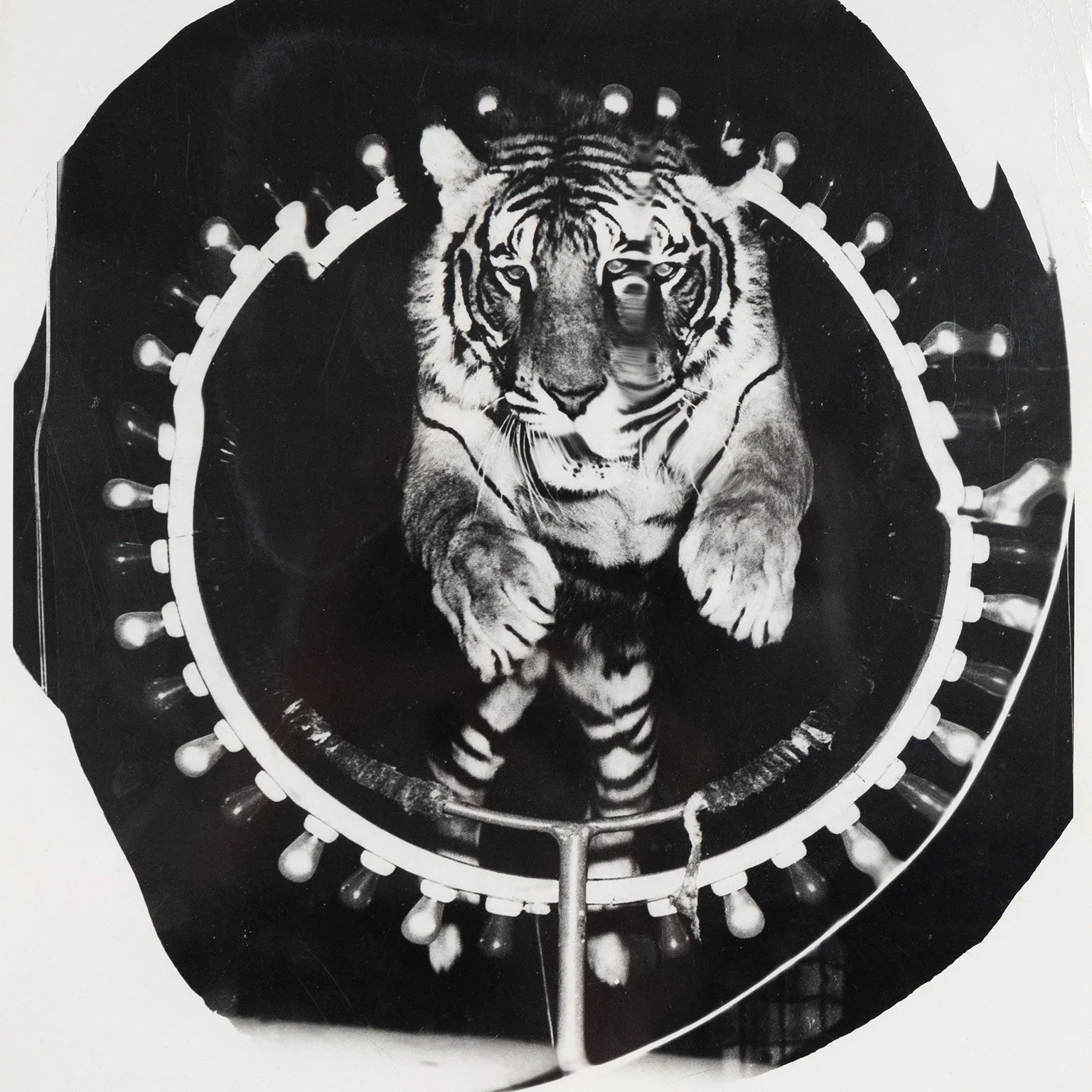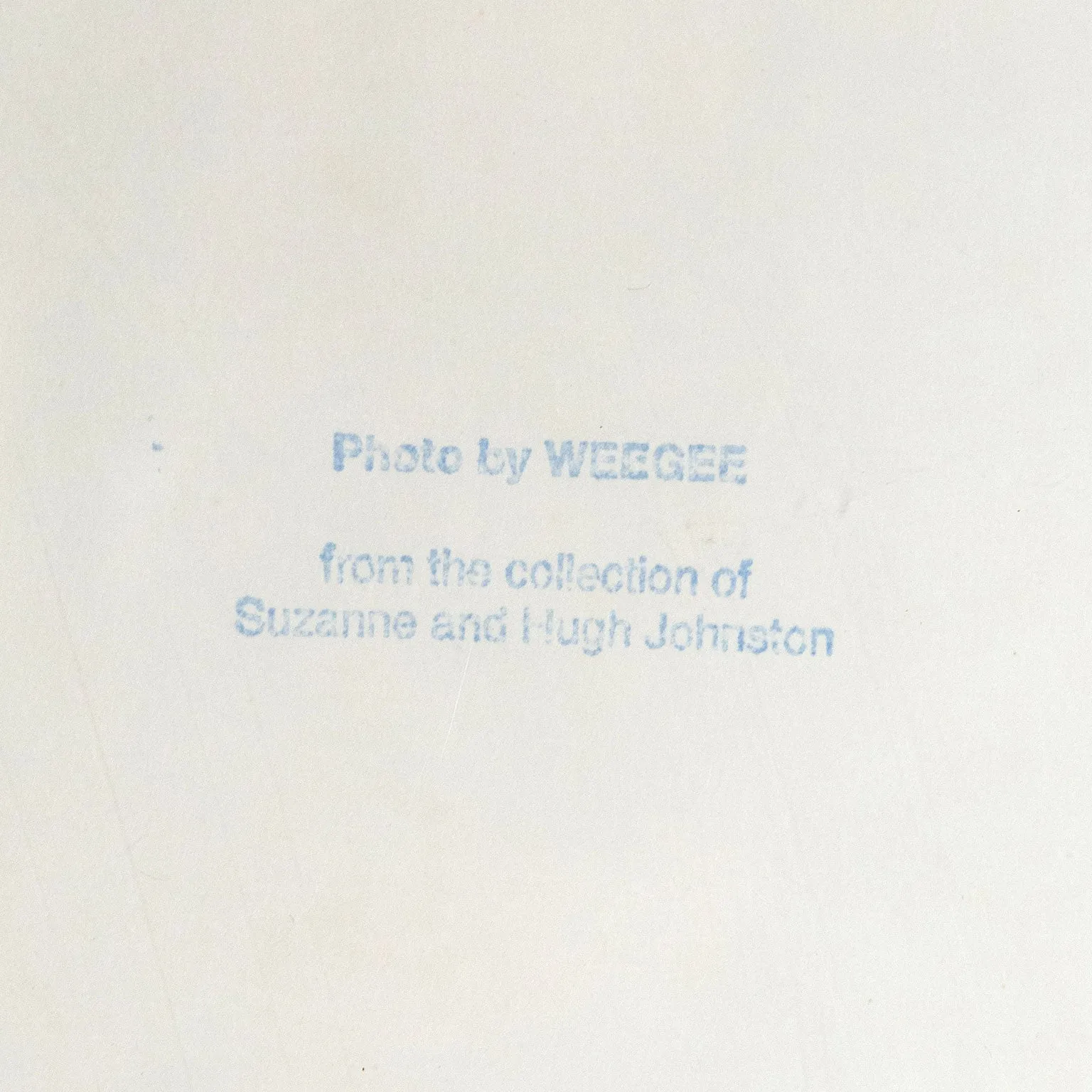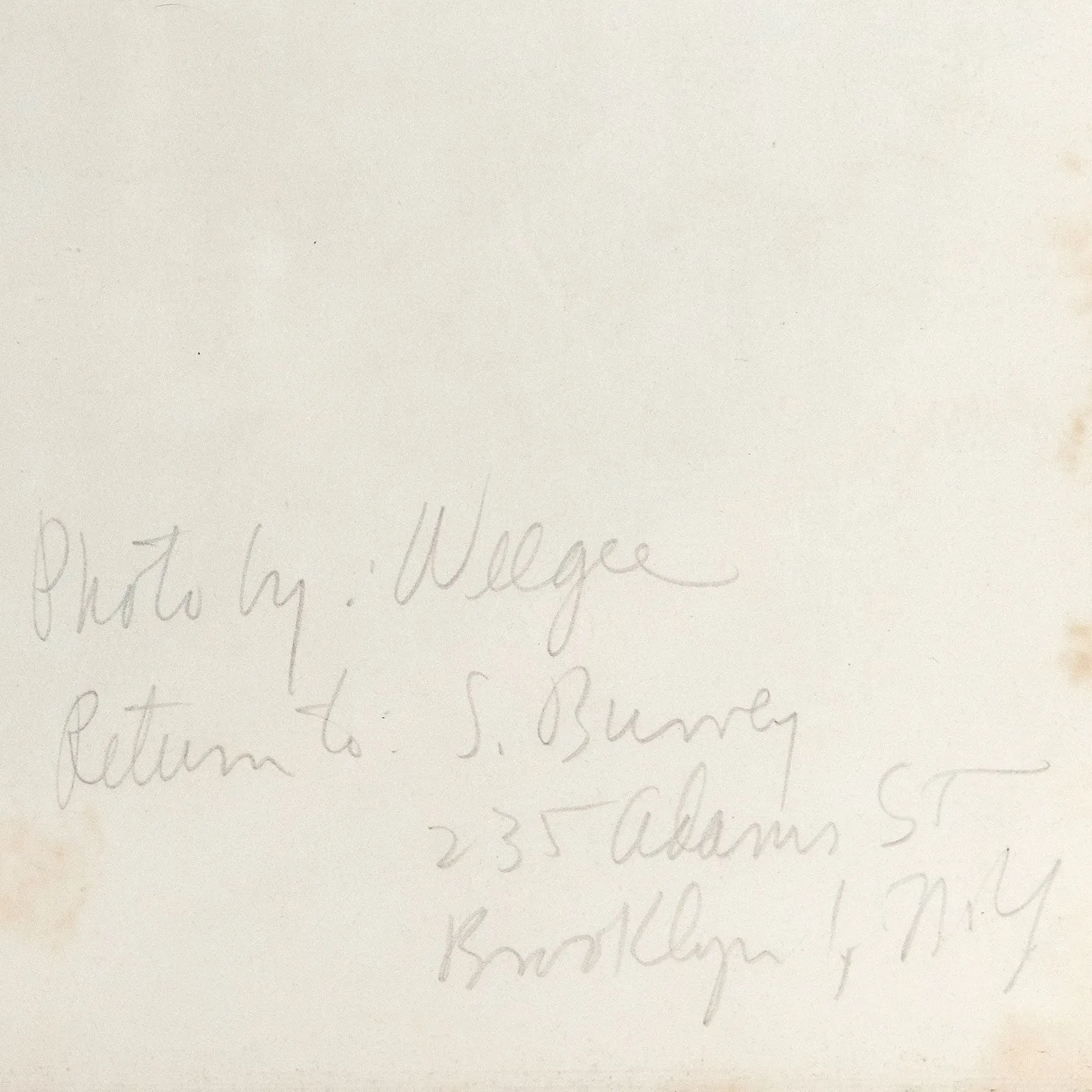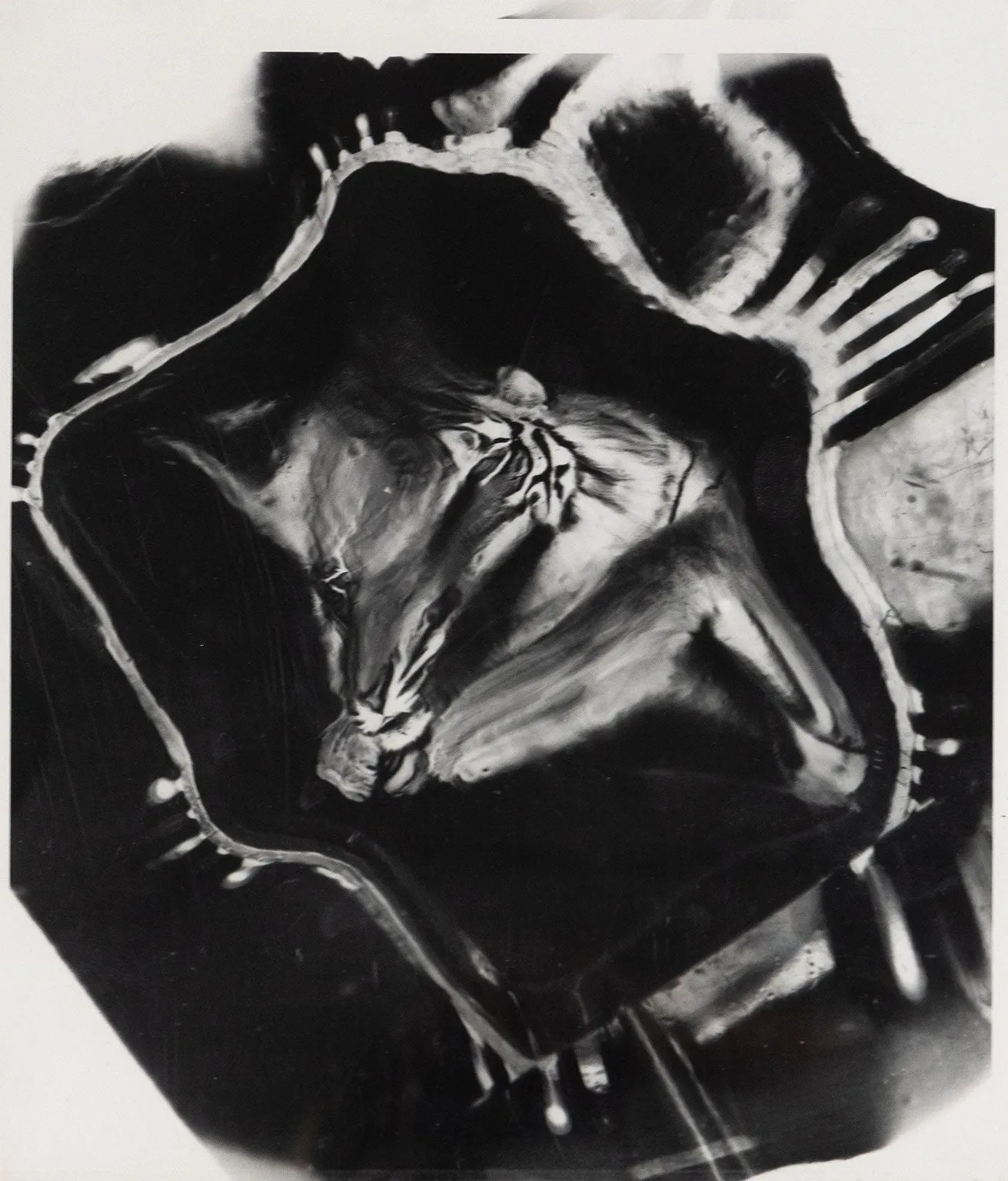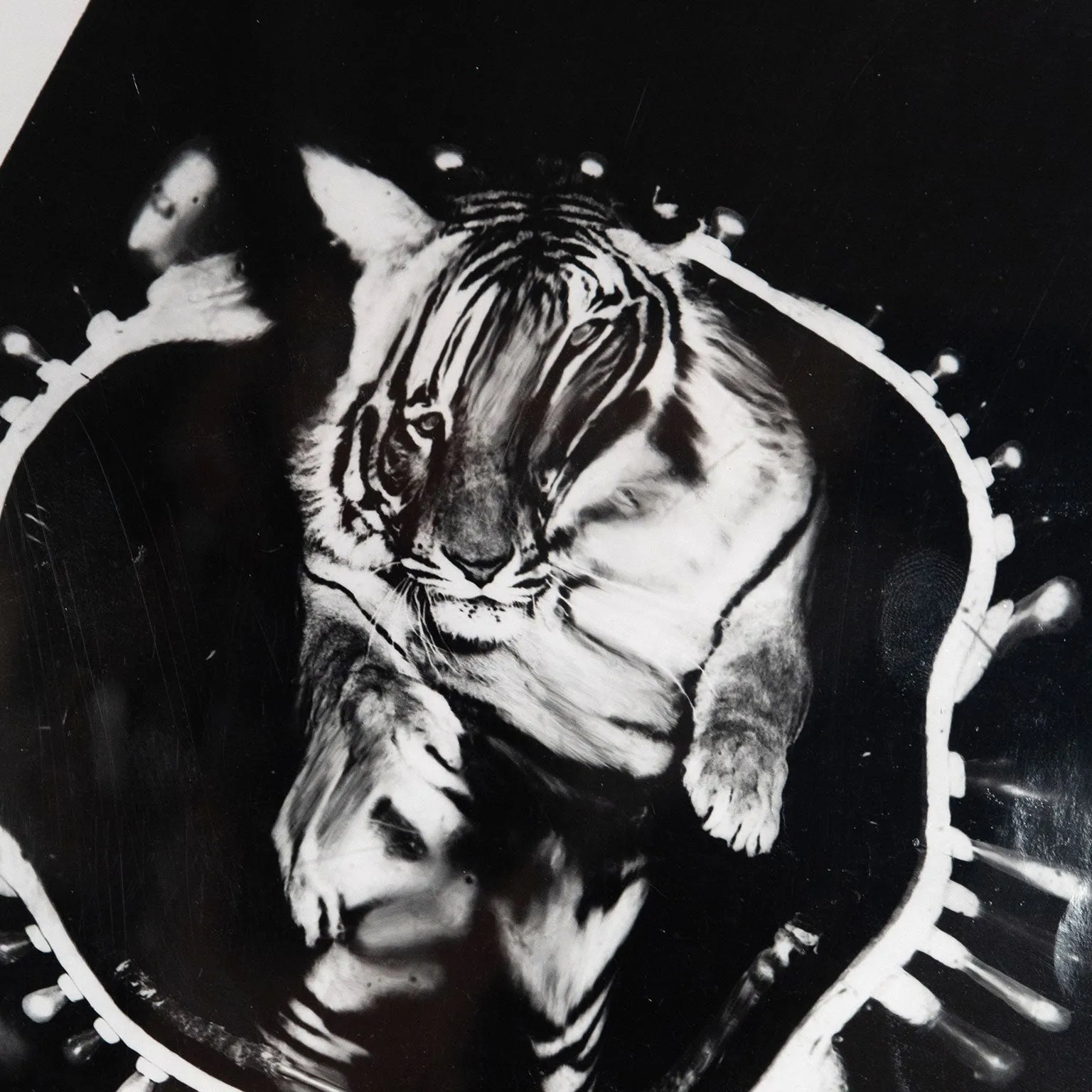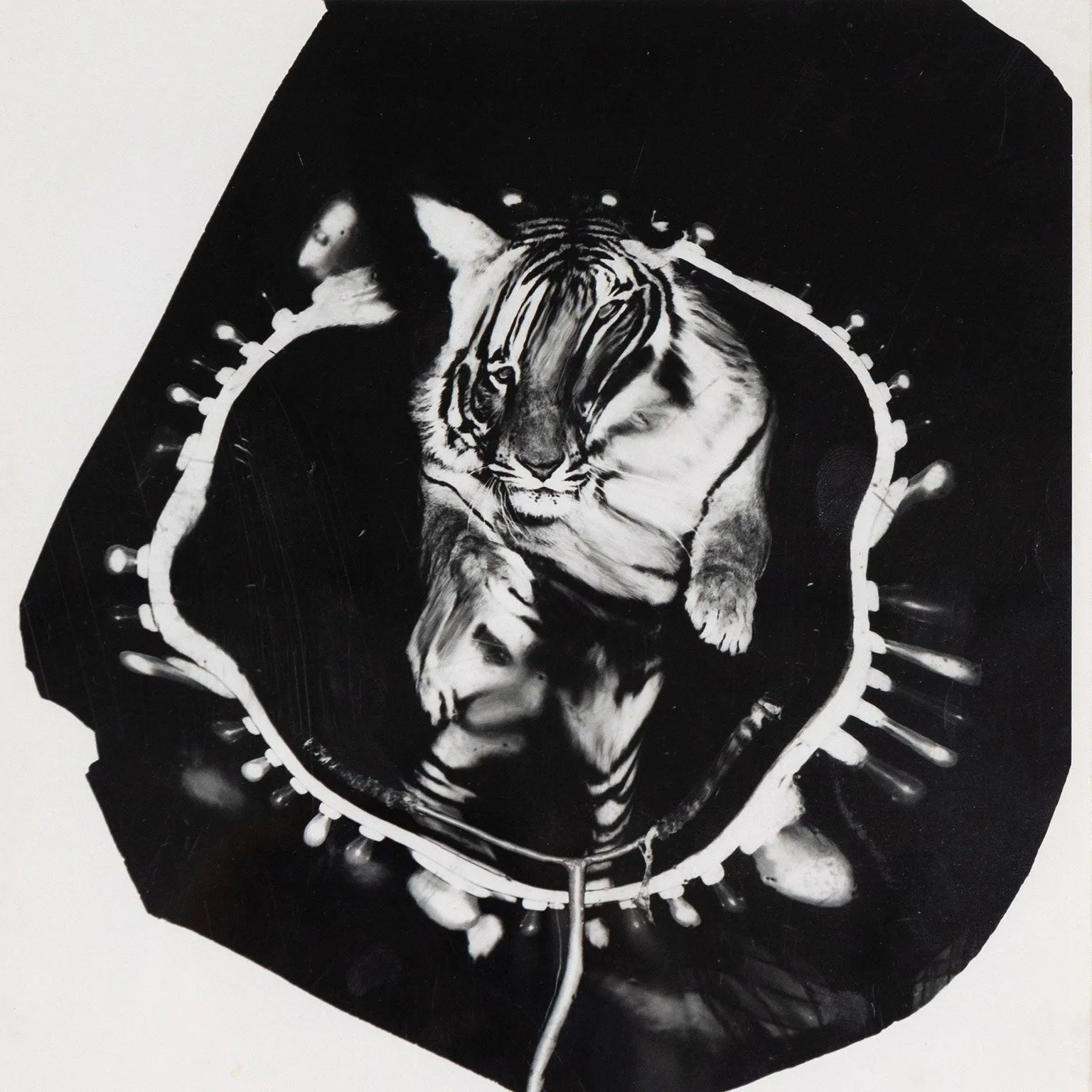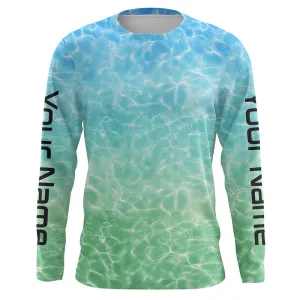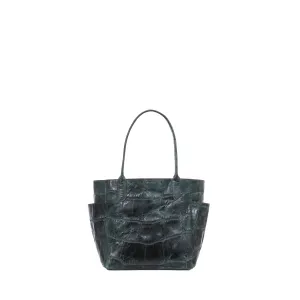Arthur Felling (1899-1968), better known as Weegee, is America's premiere photojournalist and one of the 20th century's most influential photographers.
Weegee became famous, beyond New York and news circles, after the publication of his photo books entitled Naked City (1945) and Weegee's People (1946).
Weegee's iconic images of New York City crime, disaster and tragedy are known around the world. Less well-known however, is the work he focused on during the last twenty years of his life, known as the 'distortions' period.
In the late 1940s, Weegee began experimenting with photographic manipulation, both in the darkroom and using an array of filters on his camera. Weegee created distortions on a wide range of subjects; including celebrities, architecture, circus life, and nudes. The "Jumping Tiger" triptych is an excellent example of this as it demonstrates the scale of image to almost complete abstraction.
Full of momentum, this set of images captures the circus tiger as it seems to leap out of the frame towards viewer. The second image is almost grotesque as tiger's features warp and melt. Each picture becomes more dynamic and surreal, as this massive wild beast becomes a black and white phantom.
The Circus was a big draw for Weegee as it possessed many of his favorite motifs or themes; spectacle, performance, costume, entertainment...and the experience of witnesses something thrilling while amongst a crowd.
Weegee’s photography can be found in scores of museums and private collections worldwide: the J. Paul Getty Museum, Los Angeles; Museum of Modern Art, New York; San Francisco Museum of Modern Art; Museum of Modern Art, Oxford; Museum of Contemporary Art, Los Angeles; International Center of Photography, New York and more.
Questions about this piece? or call 1.416.704.1720
USA, circa 1950
Gelatin silver print
9.5"H 7.5"W (each image)
Stamped verso: Photography by Weegee, from the collection of Suzanne and Hugh Johnston
Good condition
Detailed condition report by request
Sold as a set of 3

